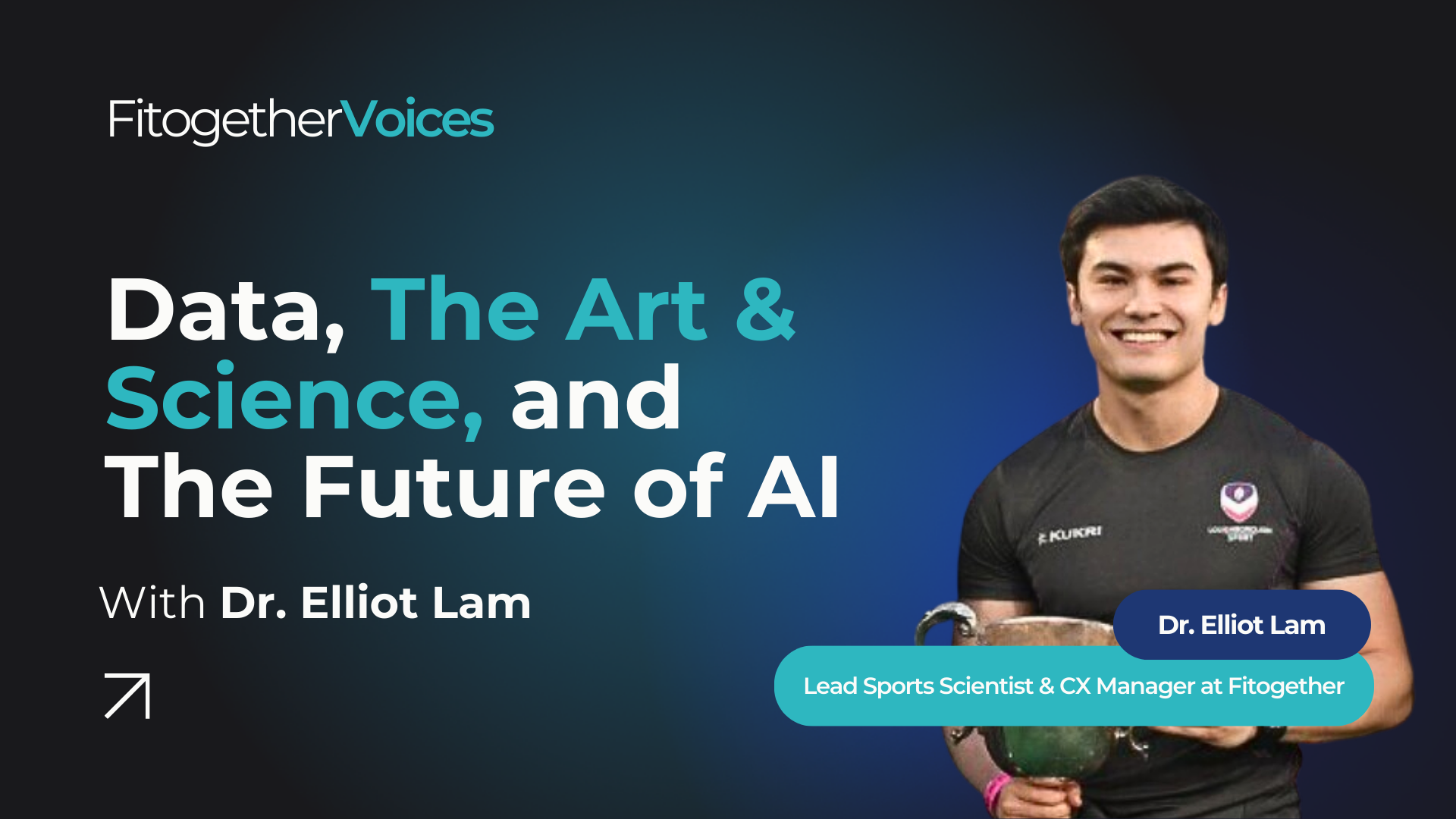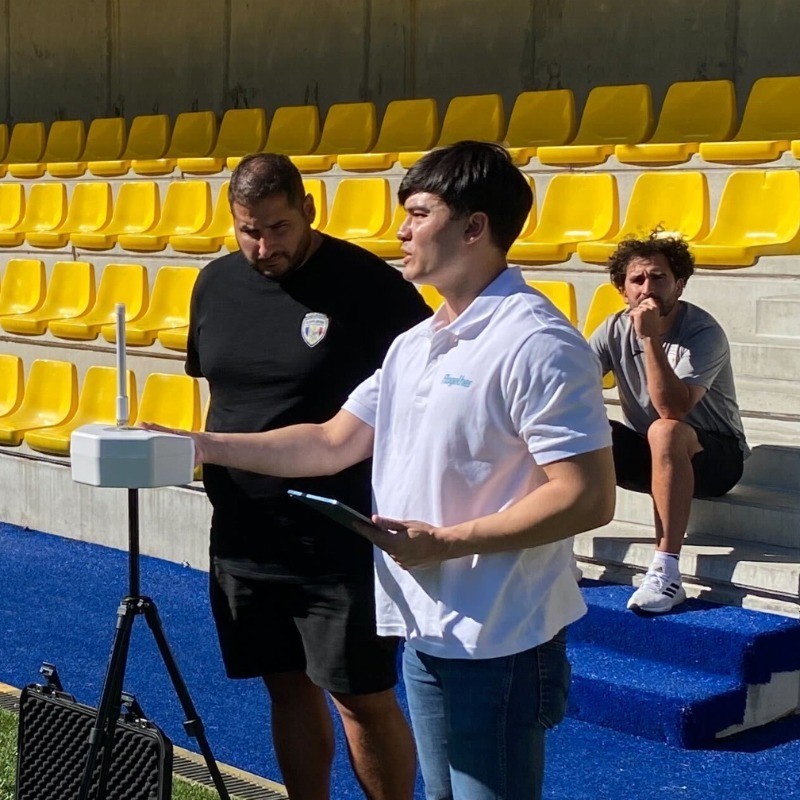
Today, we’re chatting with Dr. Elliot Lam, the Lead Sport Scientist & CX Manager at Fitogether. With a wealth of experience across multiple sports and an impressive academic background, Elliot shares his journey, his thoughts on the future of sports science, and what’s next for Fitogether.
Q: Elliot, can you tell us a bit about your background and what led you to your role as lead sports scientist at Fitogether?
Elliot: Sure! Before joining Fitogether, I spent five years as a sports science practitioner working in the EFL Championship, Premiership Rugby Union and with GB U21 field hockey players whilst completing my PhD at Loughborough University.
On the academic side, I have an undergraduate degree in Sport Science and an MSc. in Human Physiology, which gave me broader experience beyond sport, but I decided to focus on sports science. I’m more specialized in working with technology and data, which made the role at Fitogether super appealing to me.
Q: That’s an impressive journey! Do you believe sport science research is essential for athletes and teams? How can having a sport scientist make a difference?
Elliot: Absolutely, sport science is crucial! Sports are evolving at such a fast pace—players are facing higher physical demands, more games in the season, and increased competition. That’s where sports scientists come in. We help manage workloads, improve player readiness, and speed up post-injury recovery.
And it’s not just for professional athletes— in academies, younger players are also facing higher demands at an earlier age, making sports scientists crucial in managing these talents amidst the growing demands of modern sports.
By using data and technology, sports scientists can ensure that players are performing at their best while reducing injury risks, making a huge difference in the long run.
Q: Yes, I agree with you! And how do you see the role of sport scientists evolving in the coming years?
Elliot: I think sports scientists nowadays are becoming more technical and more data-driven. Many are transitioning into data science roles to model and analyze data better, not just for performance but for research too.
There’s an increasing need to understand multiple data streams—whether GNSS, strength testing, or athlete readiness metrics—and make decisions based on them.
But beyond that, sports science is also an art. Scientists need to build relationships with coaches and players, understand their squad holistically and apply data to real-world contexts. So - as tech advances, that human element of making the best decisions won’t change.

Q: What specific areas of sports science, whether research or practical, are you most passionate about?
Elliot: I’ve always been driven by the idea of using research and practical applications to improve player performance and reduce injury risk, and enhancing performance or development, particularly for young players aiming for higher levels.
I’m also really into how technology can help improve and automate workflows as sports scientists. From using AI to process multiple data streams to developing tools that enhance player availability—it's all about maximizing potential.
Q: Oh, you mentioned AI as you see something that you are really interested in right now. Do you think AI will have the biggest impact on sports science, particularly in research and education?
Elliot: I think in terms of AI, the first key thing is the fact that being able to analyse multiple data streams very quickly to be able to make decisions or be able to have the information to make decisions.
The ability to combine datasets and create models will be crucial for benefiting players, and sport scientist have more time to make those decisions and to spend time with their actual squad.
At Fitogether, AI helps us understand player movement profiles in 3D, which is important for team sports like football or rugby.
We're working on AI applications for data from wearable devices and optical tracking. For example, our hybrid program, which combines video and RTK-GNSS. We are also using AI to identify formation roles and player roles automatically and be able to quantify the physical demands based on a player roll out on the pitch.
That is something in the past that sports scientists had to code manually, but with AI, these processes are becoming more streamlined. So that's an exciting thing!
Q: That’s very interesting to hear! Lastly, do you have any advice for sports scientists working with football clubs on how they can maximize their impact?
Elliot: Yeah, I think sports scientists are always looking for the next best thing to elevate their practice within their club, beyond what other clubs are doing. You don't want to be left behind if a new trend or a new technology is coming out, because that could mean that your club is behind certain other clubs.
So, always keep up to date and don’t be afraid of trying the newest technologies out there. If it's something that can really elevate your practice, it's definitely a key aspect for sports scientists to stay aware of.
Of course, there's still many aspects of sports science—it's not one-size-fits-all. There's a number of different ways you can apply certain technologies. It's not about being accustomed to thinking there's only one way of working. The understanding that individual players may need different things or may need different applications of technology to be able to get the best out of them is essential.
The human element—being able to understand players and keeping in mind that data informs rather than automatically prescribes—is a very key concept that sports scientists will always have to consider and apply to their practice.
So, as well as understanding the latest technologies and data, it's all about improving the human side, improving player relationships, and coach relationships. As I touched on further, that blend of the arts and the science is a real key skill set for a sports scientist to be successful within the team they’re working with.
It is really inspiring to hear Dr. Elliot Lam talk about the dynamic role that sports science will play in setting the future of athlete performance.
One of our goals at Fitogether is pioneering such innovations into reality: using the best of data and technology to bring a new face to sports science.
If you’re curious to learn more or explore how we can support your team, try Fitogether today! Fill out our contact form, and enjoy a free consultation with one of our experts.
To drive the sports performance together!
%201.png)

